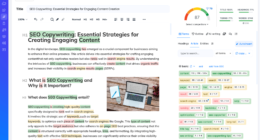Small businesses can choose from several reliable database solutions that match their needs and budget. Popular options include MySQL and PostgreSQL for open-source flexibility, Microsoft SQL Server for Windows integration, and Oracle Database for enhanced security. Cloud-based platforms like Amazon Aurora offer managed services with reduced maintenance costs. Key features to think about include scalability, automated workflows, real-time analytics, and secure access controls. Understanding each solution’s specific strengths will guide businesses toward the ideal choice for their operations.
Quick Overview
- MySQL offers a cost-effective, open-source solution with strong security features ideal for small businesses starting their database journey.
- PostgreSQL provides excellent scalability and handles complex data types well, making it perfect for growing small businesses.
- Microsoft SQL Server integrates seamlessly with Microsoft products and offers powerful reporting tools for Windows-based small businesses.
- Cloud-based solutions like Amazon Aurora reduce maintenance overhead and provide flexible pricing options for resource-conscious small businesses.
- Zoho CRM combines database functionality with customer relationship management, offering real-time tracking and AI insights for sales-focused businesses.
Understanding Database Software Essentials

Every successful small business needs a reliable way to manage its growing mountain of data. Database software provides the essential foundation for organizing, protecting, and efficiently accessing business information. These systems offer critical features that help companies maintain data accuracy while enabling multiple users to work simultaneously.
Modern database platforms like Zoho Creator deliver powerful capabilities through drag-and-drop interfaces for simplified development. These systems offer powerful capabilities:
- Data modeling tools to structure information logically
- Built-in security measures for user authentication
- Automated backup and recovery systems
- Scalable architecture to handle increasing data volumes
- Support for various data types and formats
For small businesses, the right database solution acts as a central hub for operations, streamlining everything from customer relationship management to inventory tracking. It eliminates redundant data entry, guarantees consistency across departments, and provides reliable access to critical business information when needed.
Top Database Solutions for SMBs
Small businesses have numerous database software options to choose from in today’s market. Popular open-source solutions like MySQL and PostgreSQL offer robust features without hefty price tags. MySQL shines with its strong security and excellent performance, while PostgreSQL handles complex data types and large datasets effectively.
For businesses deeply invested in Microsoft products, SQL Server provides seamless integration and powerful reporting tools. Oracle Database, though typically enterprise-focused, offers unmatched security and compliance features for businesses handling sensitive data. The ability to maintain centralized data management helps businesses streamline their operations effectively.
Cloud-based alternatives are gaining traction, with Amazon Aurora and Google Cloud SQL providing managed services that reduce maintenance overhead. These solutions offer scalability and professional support while eliminating the need for extensive in-house IT infrastructure. Each option has distinct advantages, making the choice dependent on specific business needs and technical requirements.
Key Features That Drive Business Growth

Modern database software equips businesses with essential features that accelerate growth and streamline operations. These systems offer robust data management capabilities, guaranteeing that information is centralized, organized, and easily accessible.
Key growth-driving features include:
- Cloud-based scalability to handle expanding data needs
- Automated workflows that reduce manual tasks
- Real-time analytics for data-driven decisions
- Secure access controls to protect sensitive information
- Integration tools for connecting business systems
The most impactful features focus on efficiency and security. Role-based access keeps data safe while enabling team collaboration. Customizable dashboards help track business performance, and automated backups safeguard data protection. For small businesses looking to expand, these features provide the foundation for sustainable growth while maintaining operational excellence. The inclusion of database management systems ensures businesses can effectively segment their target audiences and analyze customer behavior patterns.
Cost Analysis and ROI Evaluation
A business’s decision to invest in database software requires careful evaluation of both upfront costs and long-term financial benefits. Initial expenses include software licensing, hardware requirements, implementation costs, and staff training. However, smart investments often lead to significant returns through improved efficiency and data accuracy.
When analyzing ROI, businesses should consider:
- Productivity gains from streamlined data management
- Cost reductions through process automation
- Revenue growth from better decision-making
- Enhanced customer retention rates
Budget-conscious companies can explore cost-effective options like:
- Open-source solutions (MySQL, PostgreSQL)
- Cloud-based services with flexible pricing
- Starter packages with essential features
Hidden costs shouldn’t be overlooked, including data migration, system integration, and ongoing maintenance fees. Many businesses find that open-source databases offer substantial savings through minimal maintenance expenses and strong community support. An exhaustive evaluation should consider the total cost of ownership over 3-5 years, factoring in both direct expenses and potential savings.
Cloud vs. On-Premises: Making the Right Choice

With cost considerations carefully weighed, businesses face another significant decision in their database journey: choosing between cloud-based and on-premises solutions. Each option offers distinct advantages that small businesses must evaluate against their specific needs. Cloud-based databases typically operate on a subscription-based model, making them more predictable for budgeting purposes.
| Factor | Cloud | On-Premises |
|---|---|---|
| Initial Cost | Low upfront investment | High hardware costs |
| Control | Provider-managed | Full control |
| Scalability | Instant and flexible | Limited by hardware |
| Security | Provider-enhanced | Self-managed |
| Performance | Internet-dependent | Locally optimized |
The choice often depends on three key factors: technical requirements, business growth plans, and regulatory compliance needs. Cloud solutions excel for companies needing flexibility and minimal IT overhead, while on-premises systems better serve businesses with strict data control requirements or high-performance needs. Small businesses should carefully assess their current operations and future goals before making this essential infrastructure decision.
Implementation Steps and Best Practices
Successfully implementing a database system requires careful planning and systematic execution through several critical phases. Organizations must follow a structured approach that begins with defining requirements and ends with ongoing maintenance and support. The process involves careful consideration of business needs, technical capabilities, and future scalability.
Start by thoroughly documenting business requirements, including data types, user access needs, and integration points with existing software. Choose a database system that matches your budget and technical requirements, testing demo versions before making a final decision. Implementing a custom database solution can provide complete control over data handling and better match your specific business needs. Create a detailed implementation timeline with clear milestones, including staff training, data migration, and system testing phases.
Following these steps helps guarantee a seamless shift to the new database system while minimizing disruption to daily operations and maintaining data integrity throughout the process.
Frequently Asked Questions
How Long Does It Typically Take to Migrate Data From Spreadsheets?
Migrating data from spreadsheets typically takes between a few hours to several weeks, depending on key factors. For small spreadsheets (under 1,000 rows), migration usually takes 2-4 hours.
Medium-sized files (1,000-10,000 rows) generally require 1-3 days. Large spreadsheets with complex data structures may take 1-2 weeks.
The duration also varies based on data quality, available tools, and the expertise of personnel handling the migration.
Can Multiple Users Access the Database Simultaneously Without Performance Issues?
Like a well-orchestrated symphony, modern database software enables multiple users to work harmoniously without missing a beat. Most systems can comfortably handle dozens of simultaneous users through built-in concurrency controls and locking mechanisms. Performance typically remains stable with proper configuration and optimization.
However, user experience may vary based on factors like:
- Internet connection speed
- Server capacity
- Database size
- Number of active users
- Query complexity
What Happens to Our Data if the Database Software Company Goes Bankrupt?
When a database software company declares bankruptcy, customer data typically becomes a corporate asset that can be sold to satisfy creditors. The outcome depends on several factors:
- Original privacy policies and terms of service
- Whether data is stored locally or in the cloud
- Applicable privacy laws and regulations
- Bankruptcy court decisions
To protect data, businesses should:
- Keep local backups
- Review vendor contracts carefully
- Have a migration plan ready
- Monitor bankruptcy proceedings if they occur
Is It Possible to Switch Database Providers After Implementation?
Like instructing an old dog to learn new tricks, switching database providers is entirely possible but requires meticulous planning. Companies can successfully move between providers through a methodical approach that includes:
- Creating thorough data backups
- Mapping data structures
- Testing migration scripts
- Updating application code
While the process can be complex and time-consuming, proper execution minimizes risks. Most businesses complete the switch with minimal disruption when following established migration protocols and working with experienced database administrators.
How Often Should We Perform Database Maintenance and Optimization?
Database maintenance frequency should follow a structured schedule based on data volume and usage patterns. Daily tasks include running backups and monitoring system health.
Weekly maintenance involves index optimization and integrity checks. Monthly activities focus on security updates and performance analysis.
Quarterly reviews cover user permissions and access patterns. Additionally, immediate maintenance may be required when performance issues arise or after significant data changes.
Conclusion
According to recent market research, 94% of small businesses now use some form of database software to manage their operations. The right database solution can dramatically transform how a company handles its data, customer relationships, and daily workflows. By carefully evaluating features, costs, and implementation requirements, small businesses can select a database platform that not only meets their current needs but also scales effectively as they grow.









